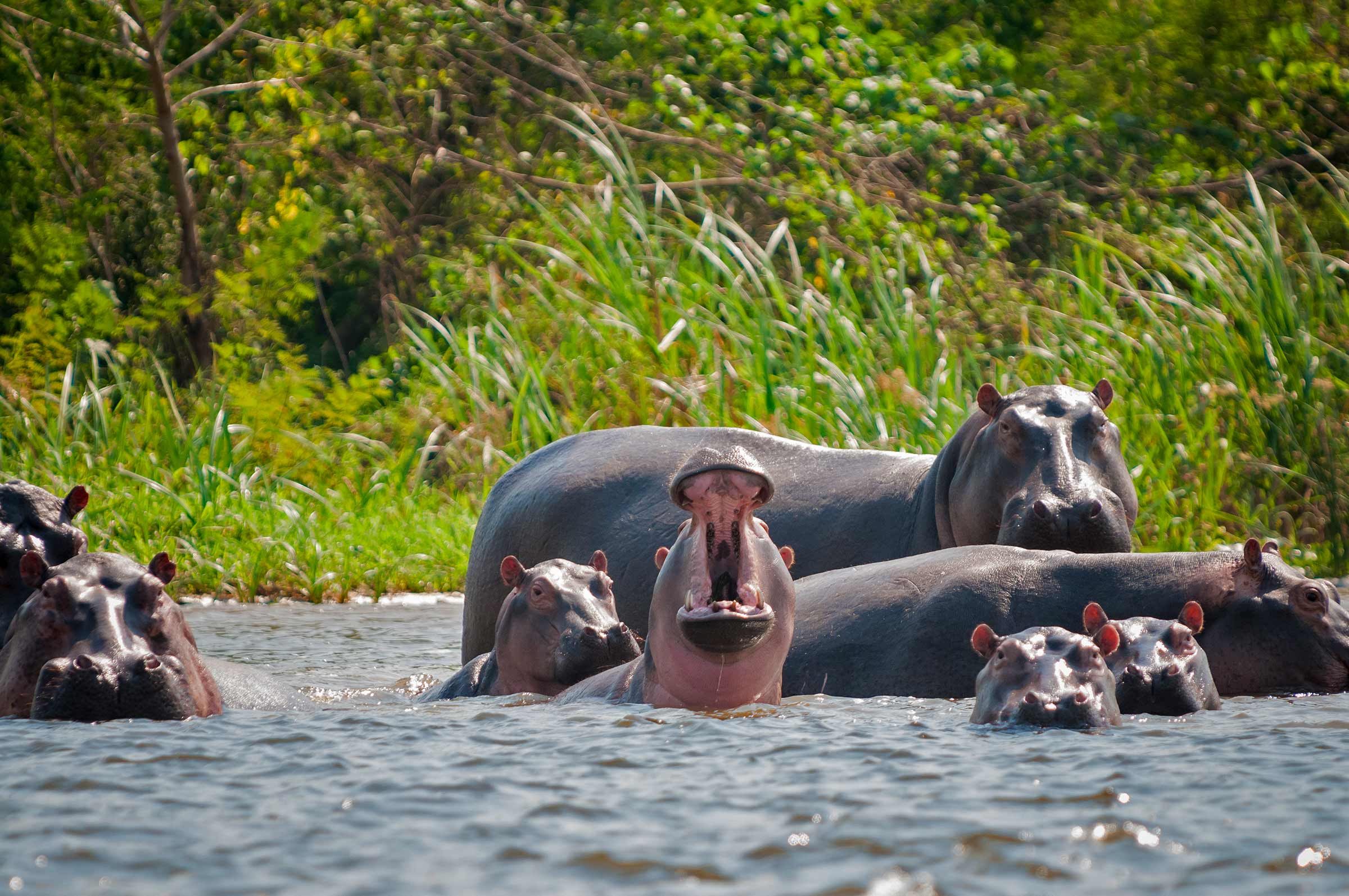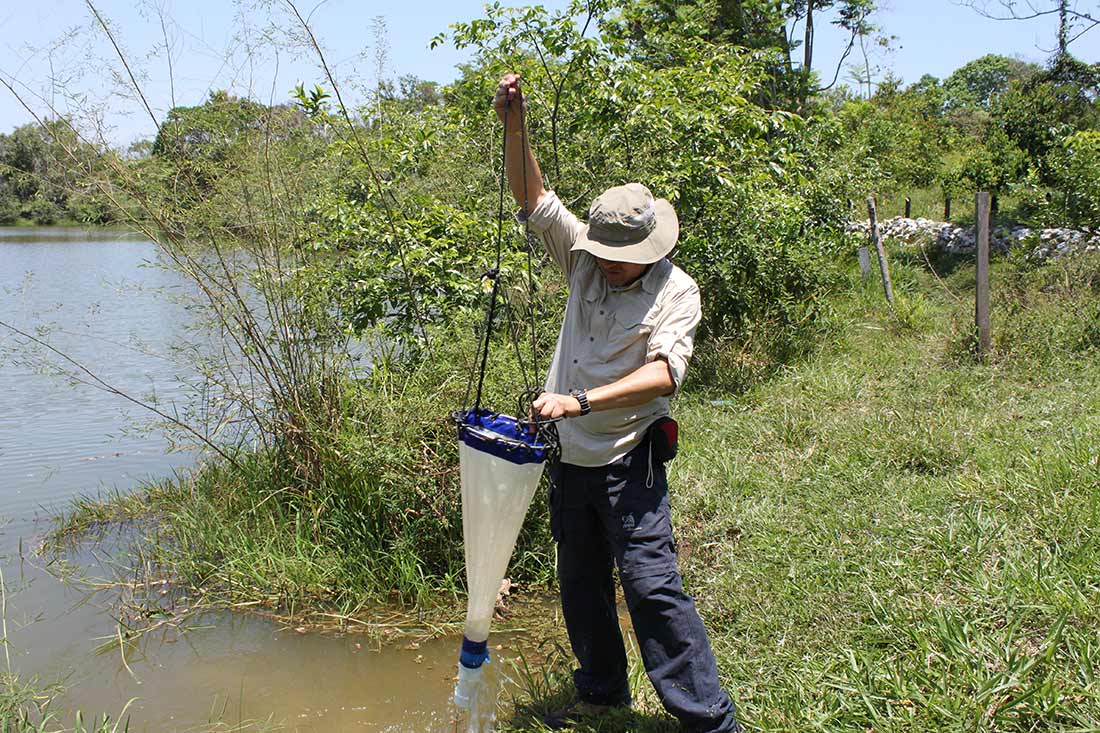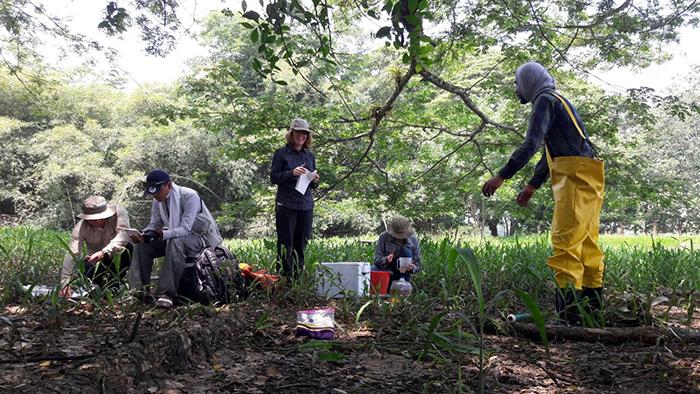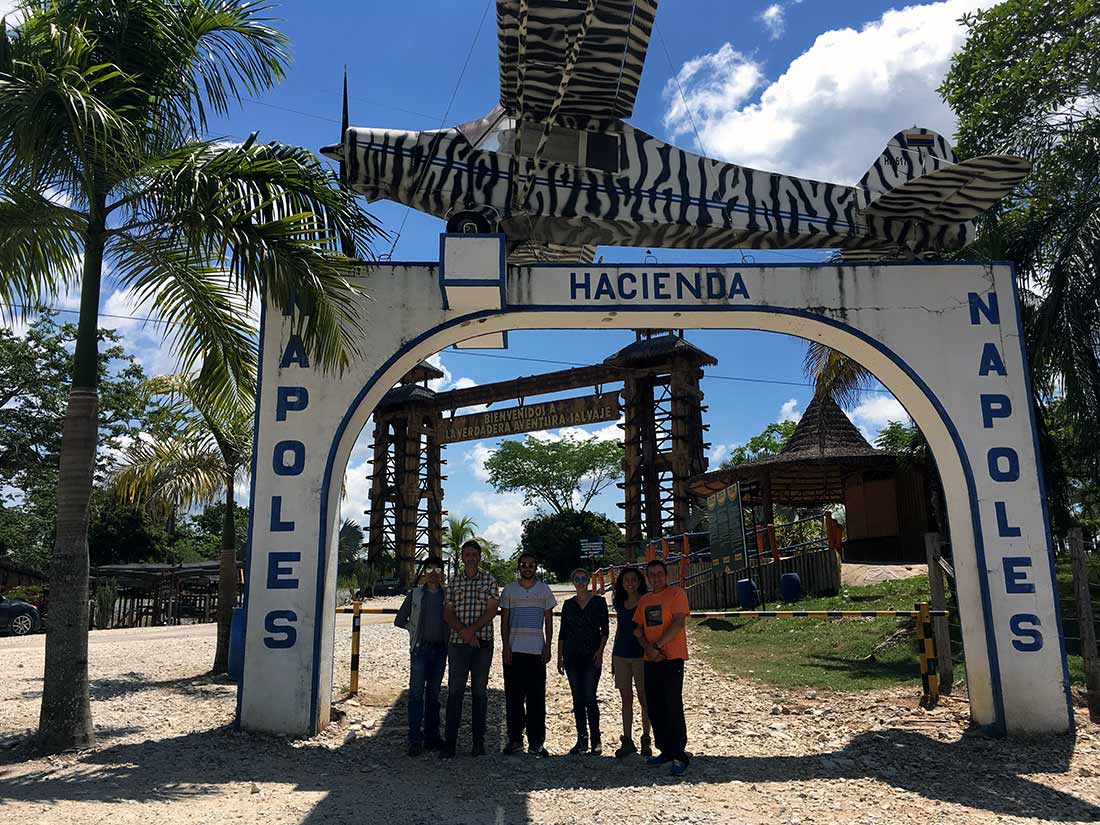
By:
- Mario C. Aguilera
Published Date
By:
- Mario C. Aguilera
Share This:
A Drug Lord and the World’s Largest Invasive Animal
Zoo built by ‘Cocaine King’ Pablo Escobar gives UC San Diego biologists rare chance to study ecological impact of hippos gone rogue

At his infamous zenith in the 1990s, Pablo Escobar’s drug-fueled empire—a vast underworld syndicate built upon the United States’ insatiable appetite for cocaine—made him one of the wealthiest criminals in history.
With income peaking at more than $30 billion, the drug-smuggling kingpin spent lavishly on a sprawling estate for his family and members of his Colombian cartel. The excesses of Hacienda Nápoles, featured on Netflix’s wildly popular “Narcos” series, included a zoo stocked with exotic animals transported from around the world.
But when Escobar’s empire came crashing down, the animals were relocated to new homes. Lions and giraffes, sure. But relocation isn’t nearly as simple for the largest occupants of Escobar’s zoo: hippopotamuses, the herbivores that are placid in appearance but several thousand pounds, territorial and dangerous.
In the years since, four original hippo inhabitants of Escobar’s zoo have gone rogue and multiplied to more than 40 animals—but the count could be 50… or even 60. No one knows for sure since the animals are difficult to track. The bizarre situation caught the attention of UC San Diego Division of Biological Sciences Professor Jonathan Shurin, who has collaborated with Colombian scientists over the years on a variety of scientific projects in aquatic ecology.
“This was a great opportunity to study something that had never been studied before,” said Shurin, fully appreciating the non-traditional roots of his hippo project. “Evaluating the ecosystem impacts of the world’s largest animal living outside its native range is something you don’t often get to do.”
Giant Ghosts of the Past
Four hours east of Medellín in northern Colombia’s Puerto Triunfo municipality, the hippos of Hacienda Nápoles have become a tourist attraction. Since Escobar’s days they’ve fanned out and formed family groups in small lakes around the region. Lone males can be seen wandering about—evicted from their families when they reach maturity—looking to attract mates of their own. Hippo power struggles and battles for dominance have resulted in deaths of the losing males.

Nelson Javier Aranguren-Riaño and fellow hippo project researchers captured a variety of ecological data, including oxygen levels, water chemistry and audio soundscapes. Photo by Natalie Jones/UC San Diego
For the past two years, Shurin and UC San Diego postdoctoral researcher Natalie Jones have been working with Associate Professor Nelson Aranguren-Riaño of La Universidad Pedagógica y Tecnológica de Colombia (UPTC) on a hippo research project funded by the National Geographic Society. Along with students from UPTC, fishermen, researchers and veterinarians, they have been analyzing how the hippos’ presence may be altering nearby lakes and the Magdalena River.
Hippos are classified as “ecosystem engineers” since they move key nutrients from one ecosystem to another, not unlike how salmon transport ocean nutrients to rivers upstream.
“(Hippos) fertilize lakes by eating grass on land and then defecating in the water at night,” said Shurin. “This has effects across the ecosystem, from microorganisms all the way to things like frogs and bats.”
The researchers use oxygen loggers to measure daily aquatic oxygen cycles, as well as instruments to study microbiome samples, plankton, insects, invertebrates and a range of other inhabitants. They’re also capturing audio recordings to characterize soundscapes and identify the various frogs, birds and bats calling at night. Their analysis in the region covers hippo impacts cutting across a spectrum of occupancy, from a lake with a persistent hippo population, to lakes where they sporadically appear, to lakes where they have never been seen.
“We spent our days in the field collecting all kinds of water chemistry data to track how plant matter and decay linked to the hippos—given the huge influx of nutrients they bring into the lakes—impact ecosystem function and the other animals that inhabit the lakes,” said Jones, who normally studies impacts of much smaller animals such as trout. “It was hot and extremely humid, so we would collect all this data and then, much like a hippo, go jump into a pool to cool off afterwards.”
Shurin will present initial results of the research in June at an Association for the Sciences of Limnology and Oceanography conference in British Colombia. If the results reveal adverse environmental impacts from the hippos, the situation becomes more urgent for CORNARE (Corporación Autonóma Regional de los Cuencos de los Rios Negros), the local government agency in charge, to take action to manage the hippo population.

UC San Diego postdoctoral researcher Natalie Jones (center) worked with Colombian researchers in a project investigating the impact of Pablo Escobar’s hippos on the surrounding environment and its inhabitants. Photo courtesy of the Shurin Lab
Biologist and Colombian native Aranguren-Riaño is consistently surprised to see the hippos thriving in their adopted environment.
“It was not expected that the hippopotamus would be integrated into the aquatic ecosystems of Colombia so successfully,” said Aranguren-Riaño. “The risk to native species such as manatees, turtles and fish is high and the environmental effect is unpredictable. It is a big problem because they have migrated to the Magdalena River and could spread to other strategic regions of Colombia.”
For Shurin, the unique aspects of the project and basic biological questions allow him to go back in time to catch a glimpse of a period thousands of years ago when massive creatures roamed the Americas. Escobar’s hippos mirror long-departed continental inhabitants, or “ecological ghosts,” such as mammoths, mastodons and other giants on display at locations such as the La Brea Tar Pits and Museum.
“These animals had a huge effect on the ecosystem they inhabited,” said Shurin. “When the large animals of North America were lost, grasslands and savannahs turned into forests. So terrestrial animal communities are vastly different than what they looked like 10,000 or 20,000 years ago. The hippo project is a rare opportunity to see what effects these very large animals that have mostly disappeared might have on their ecosystems.”
Bienvenidos a la verdadera Aventura salvaje (Welcome to the wild adventure)

UC San Diego biologist Jonathan Shurin (second from left) and Colombian colleagues at the entrance of Hacienda Nápoles, Pablo Escobar’s sprawling hacienda featured on Netflix’s “Narcos” series and now a tourist destination. Photo courtesy of the Shurin Lab
Big questions surround Escobar’s hippos and what to do with them. Yes, curious tourists give the local economy a boost. But the CORNARE officials in charge of managing the area would like to round them up and send them off to new homes.
“The problem is that it’s very hard to catch them and very dangerous,” said Shurin. “Not very many zoos want them.”
Another issue is their appearance as a gentle, amphibious cow, sharing the same calm appeal of a manatee. During trips to sub-Saharan Africa, the hippos’ native land, Shurin observed locals as deathly afraid of the animal, avoiding them at all costs. The hippos’ relationship with Colombians is markedly different.
“I’ve observed that Colombians are very casual about them and seem relatively unafraid,” said Shurin. “People in Africa are terrified of hippos. They won’t go near a lake or river that has them. Colombian people seem very nonchalant about them.”
Jones said hippos didn’t pay the research team much attention during field work.
“It was surreal to be collecting water and plankton samples with 40 or so of these hippos—just being hippos, twiddling their ears and walking around,” said Jones. “Hippo population size, in most of their native range in Africa, is limited by the seasonal drought, whereas in Colombia it’s basically hot, humid and wet all year round … Because Colombian hippos don’t go through an annual hardship with limited water and food, they don’t need to battle for resources and, as a result, the hippos are maturing faster and the population is increasing.”
Shurin is interested in extending the work into a comparative study of hippo behavior. In Africa, hippos are hunted by lions when they stray too far from water. In Colombia, no such predator exists so they can move about more freely.
With each passing year, as their population and footprint expands, the frequency of hippo-human interaction increases around Escobar’s former drug empire estate.
“The people in charge of them are very concerned,” said Shurin, “especially if someone gets hurt or killed by a hippo … But so far, it hasn’t happened.”
Share This:
You May Also Like
Stay in the Know
Keep up with all the latest from UC San Diego. Subscribe to the newsletter today.


